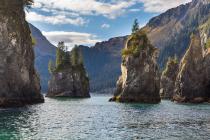Welcome to Bear Country
Whether you’re journeying to Alaska as one of our travelers or visiting the Frontier State on your own, your chances of encountering one of Alaska’s wild residents—from whales to bald eagles—are excellent. Bears are among the most common Alaska sightings and can happen during a guided excursion or even from the deck of your ship as you scan the Alaska coastline.
Here are a few things we’ve learned about bears in Alaska and the important roles they play in the state’s culture and ecology.
Kodiak Bears
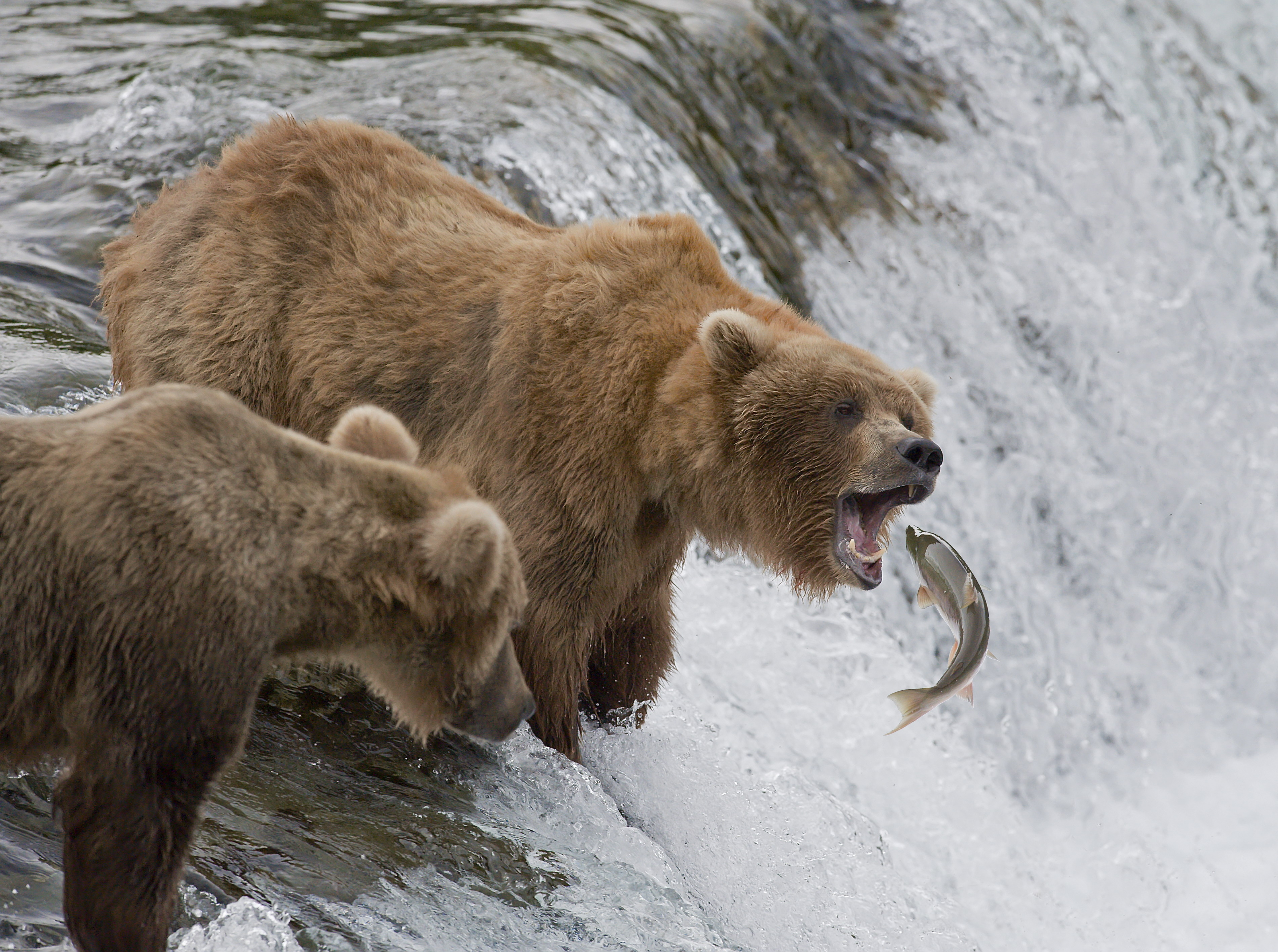
Are Kodiak bears and grizzly bears the same? Yes and no. They both belong to the same species, Ursus arctos, but the subspecies have significant differences. To start, Kodiaks are unique to Alaska’s remote Kodiak Archipelago.
Also known as the Alaska brown bear, Kodiaks are some of the largest bears in the world, often towering more than 10 feet tall (when standing on hind legs) and weighing up to 1,500 pounds. They’re surprisingly agile, too, capable of running at speeds up to 30 mph. These characteristics and their isolated habitat set them apart from other grizzlies.
Despite their size and intimidating presence, these bears are key stewards of the majestic Alaska landscape. Kodiak bears are omnivores. They’ll dine on berries and grasses but are also known to eat young deer, elk and small animals like rabbits and squirrels. In this way, they help balance the ecosystem by feeding on overpopulated mammal species.
They also help keep the surrounding habitat and streams healthy by dispersing seeds and spreading nitrogen—essential for plant growth—into the water through their salmon-rich diet.
There are an estimated 3,500 Kodiak bears in the wild, and their habitat has been protected since 1941. These creatures have minimal encounters with humans and few competitors in their environment; thus, they can be aggressive.
Grizzly Bears

On the other hand, standard grizzly bears are much more populous, with an estimated 55,000 living in North America, from Alaska across Canada and into Wyoming, Montana and Idaho. While they are plentiful in Alaska—especially as you move inland from the coasts—there are only about 1,000 remaining in the continental U.S.
Unfortunately, due to hunting, environmental changes and habitat loss, their population has decreased over the past few decades. However, these creatures are now protected by law, providing hope for their recovery. Also known as brown bears, these predators reach an average height of 8 feet and can weigh up to 900 pounds.
Black Bears
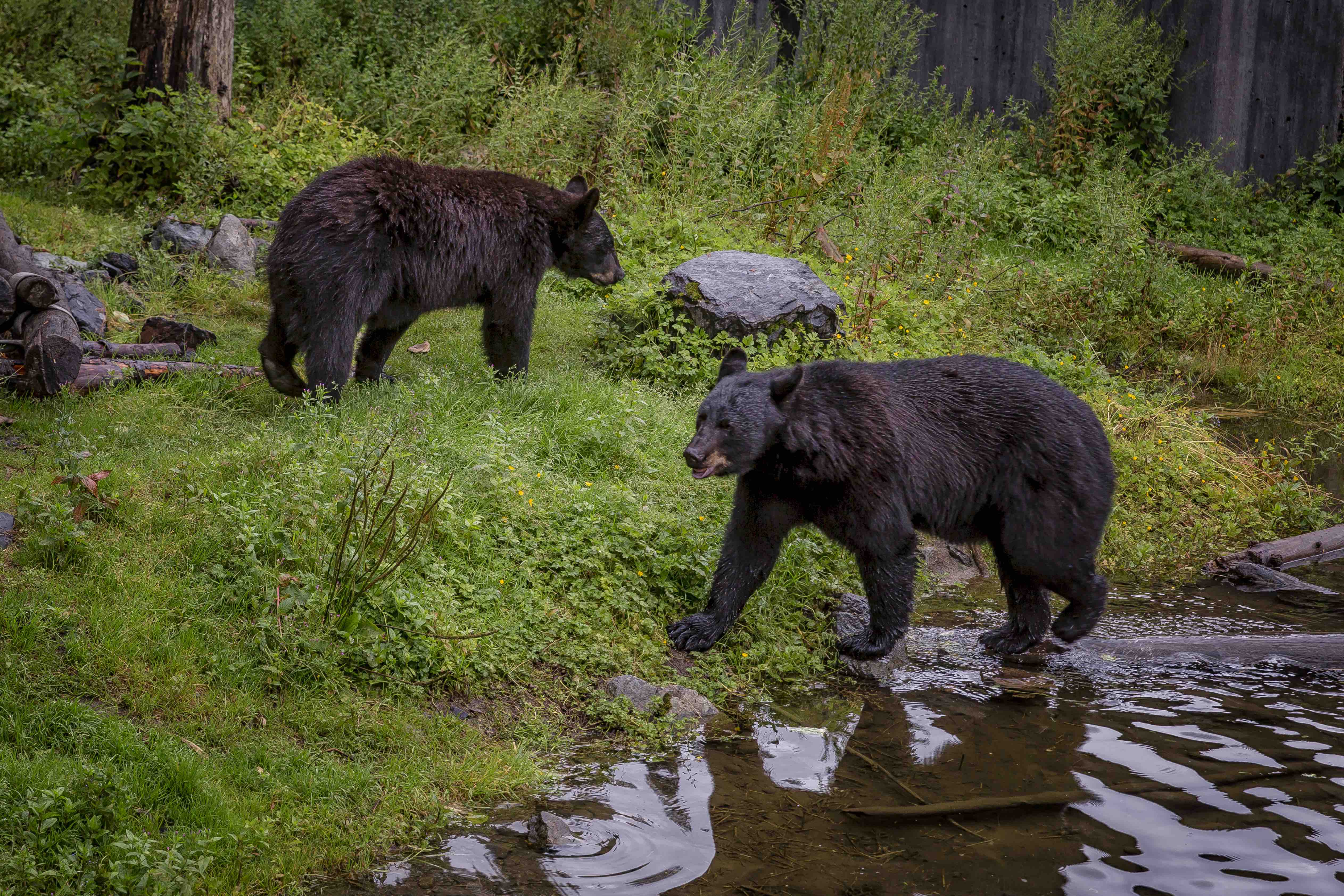
Black bears, the smallest North American species, stand up to 6 feet tall on their hind legs and weigh between 200 and 600 pounds. The name can be confusing since black bears can vary in color from black to brown to whitish or cream-colored coats, depending on their habitat. (Among native cultures, these light-colored bears are known as “spirit bears” and carry a double recessive gene that appears in about 1 in every 100 black bears.)
Apart from their size, black bears appear different from brown bears by the absence of a shoulder hump, more prominent ears, smaller and darker claws, and a flatter, sloping brow line.
Like grizzlies, black bears are omnivorous and opportunistic feeders. They’ll dine on almost anything, including fish, berries and human garbage—occasionally making them a nuisance around human communities.
Polar Bears
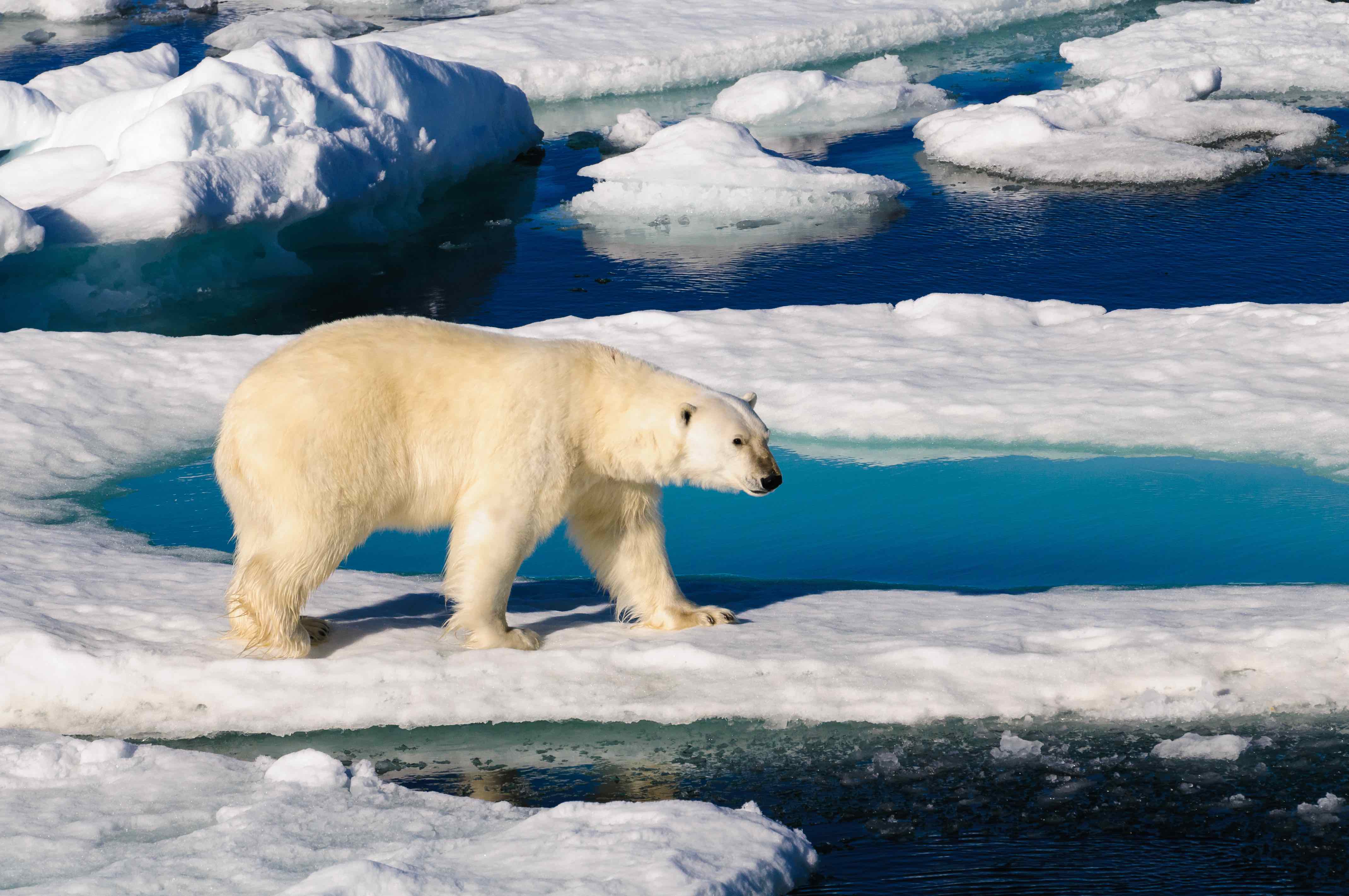
Our Christian cruises to Alaska focus on the Inside Passage and ports like Ketchikan, Juneau and Skagway. But air travelers who find their way to the packed ice and tundra of extreme northern and western Alaska may encounter another iconic species: the polar bear. These are the only bears classified as marine mammals and they spend most of their lives on the Arctic Ocean's sea ice.
Despite that classification, polar bears are also considered the largest land predators on the planet. They are carnivorous and depend on seals as their main food source. Males—twice the size of their female counterparts—can weigh up to 1,300 pounds. Part of that weight comes from two layers of fur and a thick layer of fat, adaptations to insulate them against their frigid environment.
Interestingly, polar bears don’t technically have white fur. Their fur is translucent and reflects light, giving the appearance of whiteness. As expected, these bears are excellent swimmers who can travel long distances. There are an estimated 26,000 polar bears in the wild.
Significance in Alaska
You’ll find on an Alaska cruise that beyond their ecological roles, bears of all types are deeply intertwined within Alaska’s culture—especially the Indigenous cultures that have called this land home for centuries. Bears are revered in Alaska Natives’ origin stories and legends, including those of the Tlingit, Iñupiat and Aleut peoples. They are considered guardians and symbols of courage and strength. In past centuries, warriors wore bear claws on necklaces, hoping for protection.
But beyond that physical power, many cultures also attribute authority and wisdom to bears, even viewing them as teachers and healers in Alaska Natives’ origin stories. For this reason, Indigenous communities are heavily involved in bear conservation efforts.
Encountering Alaska’s Bears
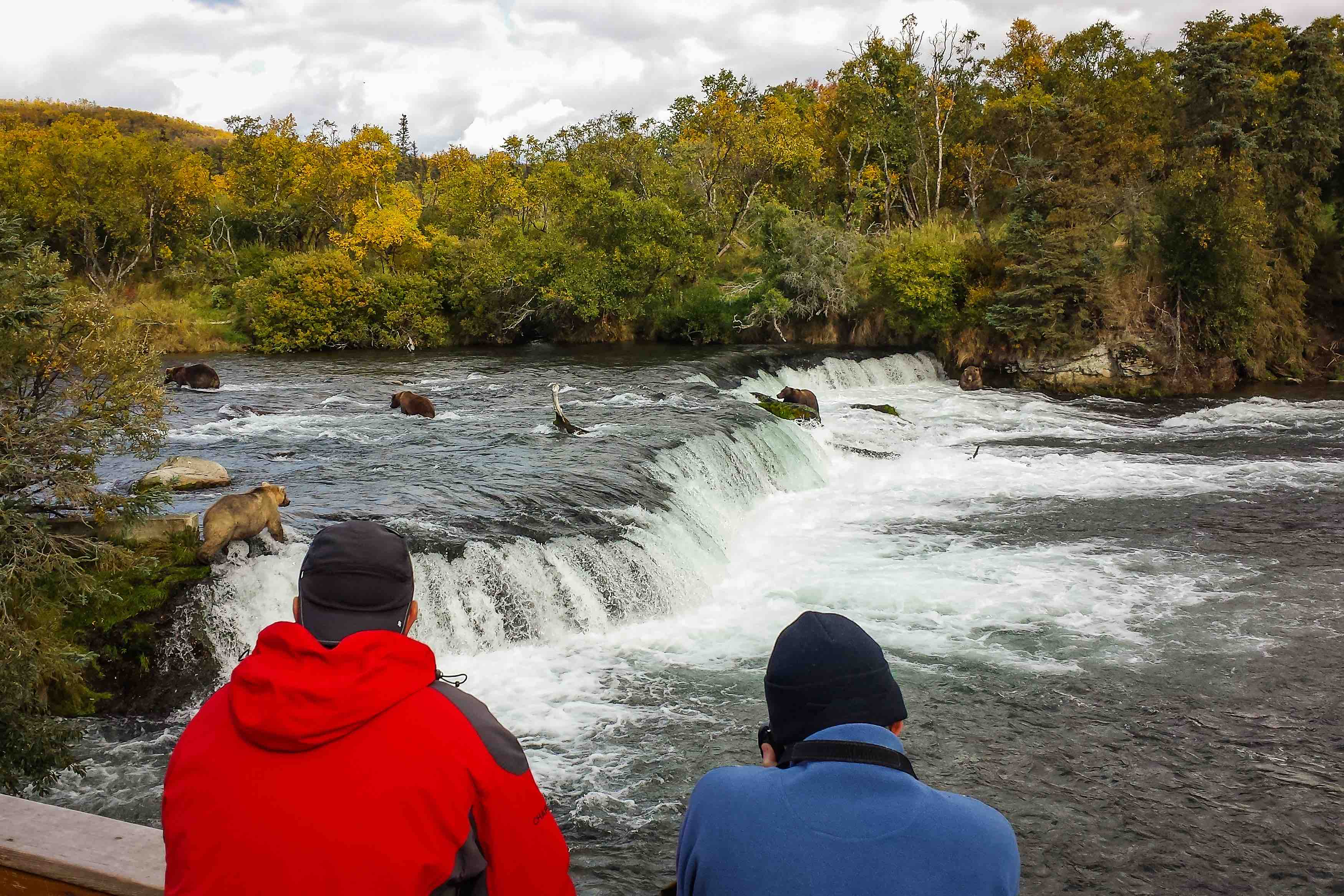
On your Alaska cruise, spotting these majestic creatures is an experience you won’t want to miss, and wild sightings are not uncommon—especially on popular bear-viewing tours. However, it’s crucial to respect these animals and always keep your distance.
Here are a few safety tips to keep in mind:
- If you want to take a photo, use a telephoto camera lens to ensure a safe distance between you and the bear.
- Don’t use a bright flash—it might frighten the bear.
- When hiking or walking through the woods, be sure to go in a group. A bear will be more intimidated if it is outnumbered.
- Don’t ever pet, feed or get close to a cub. The mama is most likely nearby and will protect her cub at all costs.
For more information on staying safe around bears, check out this National Park Service article before your next trip to Alaska.
Alaska bears truly embody the wild spirit of the Last Frontier and the power and creativity of God. We love giving our travelers the opportunity to experience these beautiful and fascinating creatures on our Christian cruises. What type of bear would you most like to encounter in Alaska?





